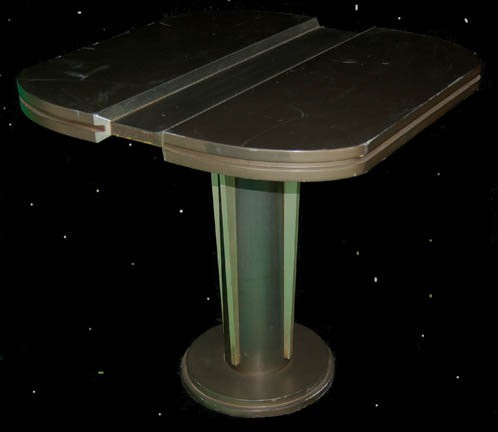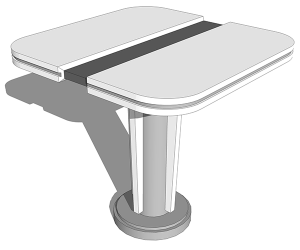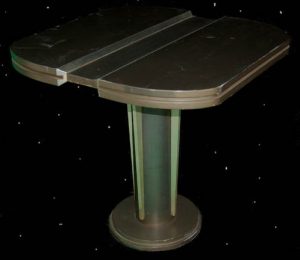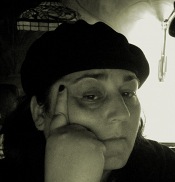I’ve recently been trying to develop my skill with Trimble SketchUp (formerly Google SketchUp). I’ve never really done much in the way of 3D modelling before, so a bunch of this is really new to me.
The first time I tried using SketchUp was a few years ago, as a tool to help with comic panel background design. I bounced off of it pretty quickly because it wasn’t terribly intuitive. But I was recently inspired to try again after seeing some really wonderful photo-realistic renders on DeviantArt.
I watched a handful of very helpful YouTube video tutorials which helped to understand a bunch of 101- and 102-level things that made my second attempt with the tool far more successful. (This video of a SketchUp conference session, in particular, had a ton of good 102-level tips.)
So I sat down and tried my hand at modelling some basic rooms and then modelling my condo floorplan and so forth. And then I decided to try my hand at modelling something based on a real-world object. Actually, I used a piece of set furniture from the Star Trek: Voyager series. Their mess hall tables were mostly rectangular shapes (so: relatively easy) but with some complicated bits as well (so: good practice). I found it hard to find a good reference picture of the base of the table, but ultimately discovered a great photo from an auction held after the show ended. The web page that had the picture also gave me some great guidance on the size of the table. 30″ x 30″ and 27″ tall.
So with those guides, I set out to recreate the table in SketchUp. I screwed up my first attempt. But I did a not-bad job on the second attempt.
So: observations. First, the photo makes the table appear far more yellow/brass coloured than it appears in the show. I tried to stick with the greys of the show.
Second, I was aware, when I made it, that the rounded corners weren’t quite right. The photo reference has a more oval-shaped corner; mine’s round. That was a limitation in my knowledge: I didn’t know how to get a good round corner that’s not circular.
Third observation: in the bevelled part of the table, my angle is 45°. I think the actual table is a bit closer to 30°. Also, there’s a very subtle vertical edge that I’ve missed.
The flaring bits on the base of the table are too wide in my version. I’ve made them an inch wide — a half inch is probably closer. Lastly, the base needs to be wider, and the lower portion of the base is too tall. Minor things that can easily be corrected.
All-in-all I’m pleased with the practice.



